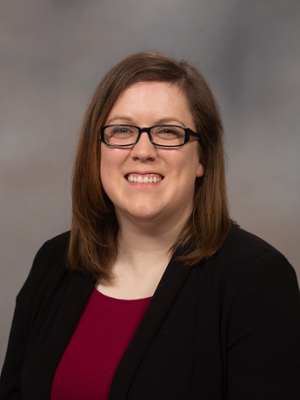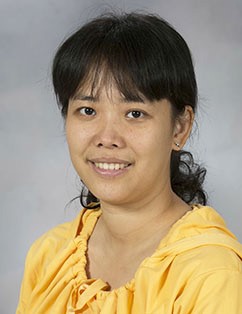Sub-Cores
Mitochondrial Research
About us
The role of the Mitochondria Research Core is to facilitate research into mitochondrial function/dysfunction for local PIs, as needed for publications and for grant proposals. The MRC is not a service facility; rather, it provides expertise for studies of mitochondrial energy transduction and ROS production, along with access to tools. As needed, we work with the PIs and their laboratory personnel to provide protocols and training, assistance during mitochondrial isolations and activity analyses, instruction on interpreting and processing raw data, troubleshooting and streamlining procedures, the preparation of data figures and help with writing manuscripts and grant proposals. We prefer to work with PIs and their labs on a collaborative basis, although smaller or preliminary investigations do not require this.
Personnel

Assistant Professor, Pharmacology and Toxicology
Director, Mitochondrial Research Core
kedwards1@umc.edu
Faculty Profile

Location
The MRC is currently moving to the 1st floor of the Guyton Research Building, into G130 and G129, from the original location on the 3rd floor of the Old Research Wing, R327, R329 and R333.
Equipment
The MRC has all equipment for the isolation of mitochondria from animal sources and from yeast, two Oroboros Fluo-Respirometers, a Hitachi U-3000 split-beam UV-Vis spectrometer for scanning and enzyme kinetics, a Cary 8454 diode array UV-Vis spectrometer for rapid acquisition of spectra and enzyme kinetics, an OLIS Clarity diffuse-reflectance UV-Vis spectrometer for obtaining spectra in whole mitochondria and a Molecular Devices plate reader for absorption or fluorescence measurements using 20 or 96 well plates. The MRC also utilizes a new Jasco V-750 UV-visible Spectrophotometer housed in the lab of Dr. Kristin Edwards, a Jasco 5300 90◦ fluorimeter, housed in the lab of Dr. J. Correia, and a Seahorse-24 (Agilent) Flux Analyzer, housed in the lab of Dr. F. Fan (Pharmacology & Toxicology).
Core services
The MRC provides protocols, training and facilitation of the following.
- The isolation of intact, well-coupled mitochondria from laboratory animal tissues (e.g. heart, liver, kidney, brain, skeletal muscle, placenta) as well as from cultured cells and yeast.
- Quantitative analyses of the ability of isolated mitochondria to respire various cellular substrates (TCA cycle intermediates, amino acids, fatty acids).
- Quantitative analyses of membrane potential during state 2, state 3 and state 4 respiration (i.e. direct measurement of coupling and proton leak).
- Measurements of the rate of ATP synthesis using various cellular substrates.
- Determinations of citrate synthase activity as a measure of mitochondrial content in tissues.
- Independent analyses of the activities of complexes I, II, III and IV in intact or broken mitochondria. Quantitation of the amounts of complex III and complex IV by visible spectroscopy, allowing measurement of the kcat of these enzymes.
- Assays of mitochondrial respiration in intact cultured cells and in cultured cells with a permeabilized cytoplasmic membrane, allowing the addition of polar reagents (e.g. ADP, drugs) to mitochondria in situ.
- Quantitative analyses of the rates of superoxide and hydrogen peroxide using broken mitochondria, simultaneous with measurement of rates of electron transfer to water. This quantifies electron leak (superoxide production) from individual electron transfer components or entire electron transfer pathways.
- Quantitative measurement of the rate of hydrogen peroxide release from intact mitochondria, i.e. the amount of ROS that escapes mitochondrial ROS detoxification to enter the cytoplasm.
- The effects of genetic alterations, gene deletions, disease states and drugs on any of the above.
Cost for services
The MRC does not charge fees for service. Participating laboratories do contribute to the cost of reagents.


